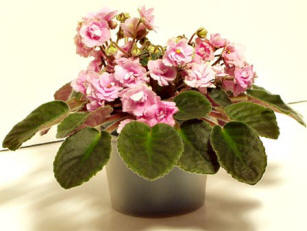Plants are just as popular as furniture when one is deciding on furniture and soft furnishings.
Aside from the aesthetic value plants provide your home with, there are also health benefits - grade school science class tells us that plants cleanse the air through utilizing the carbon dioxide and producing more oxygen. Here is some important information on how to care for your indoor plants to gain the optimum health and aesthetic benefits.
Lighting
Most indoor plants need good lighting. You can provide this through natural lighting in the room of your choice or there must be electric lighting. Darker leaved plants usually don't need as much light as others.

Here are the varieties of plants (usually those that only require medium to low light) that are known to be suitable for indoor gardening:
a. African violets
b. Boston ferns
c. Philodendrons
d. Cyclamens
e. Creeping Fig
Watering
A common mistake most people make in indoor gardening is they tend to over-water the plants, which may lead to rotting roots. Make sure to research the type of plant you have, because each kind of plant varies on their watering needs.
Potting
Choose good quality and attractive container for your indoor plants. Make sure that the pot is clean before placing your new plant into it to prevent infection and to encourage healthy growth.
Humidity
In indoor gardening, humidity is a big issue. The amount of moisture in the air has effect on the growth of the plants. During mornings, you could spray the plants with water for their much-needed moisture. Make sure the leaves don't get covered in dust.
Fertilization
Just like watering, fertilizing depends on the type of plant. If you have managed to supply your indoor garden with the right amount of light, water and humidity, fertilization may not need much attention. A good indoor fertilizer can be bought from most home depot or hardware stores. Orchids need the special fertilizer available.
Ads By CbproAds